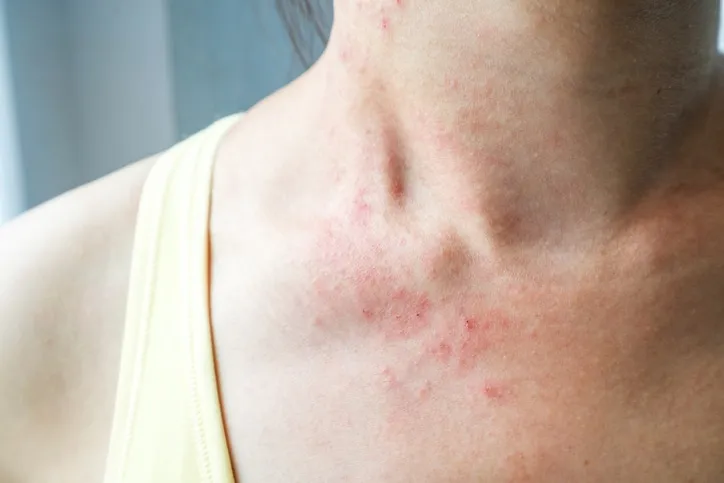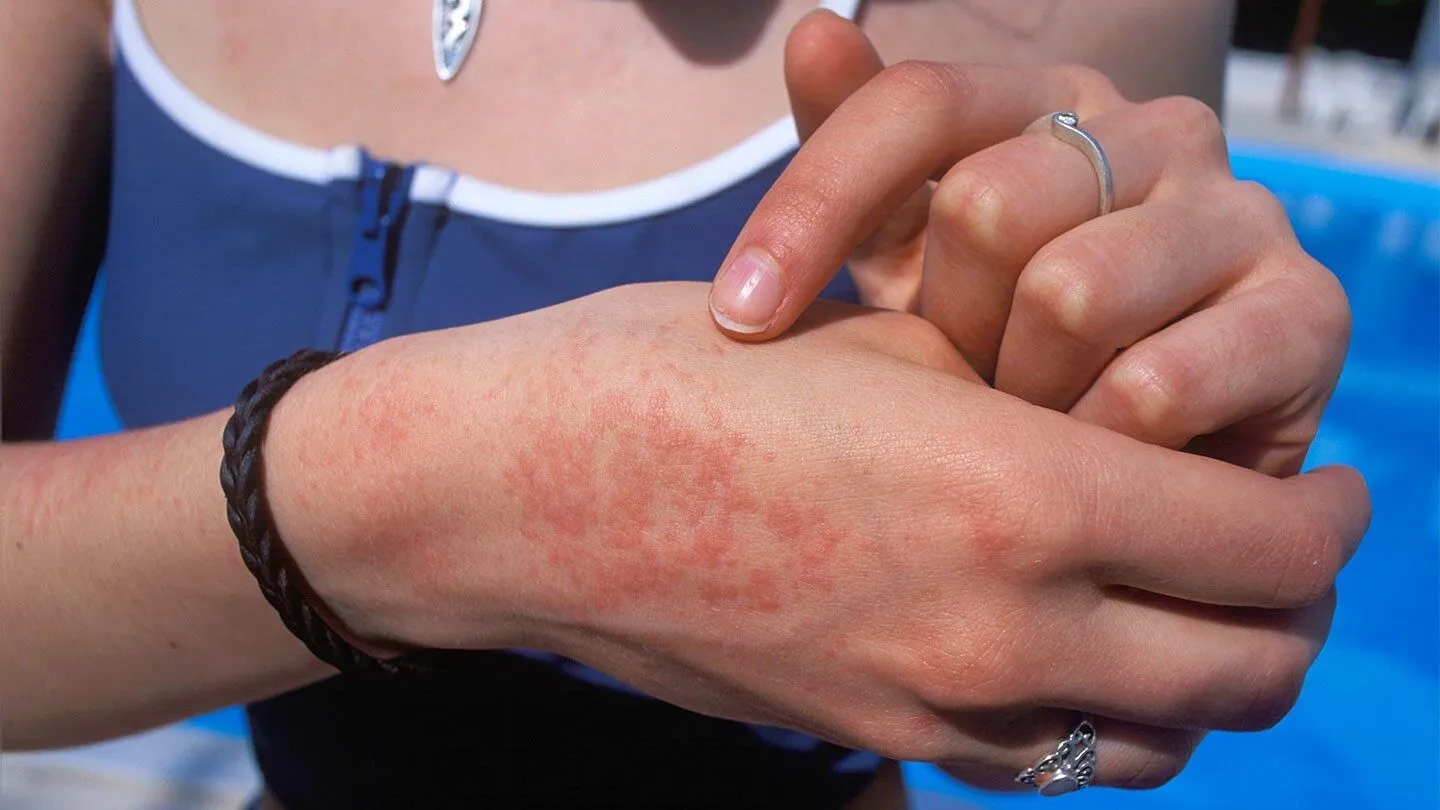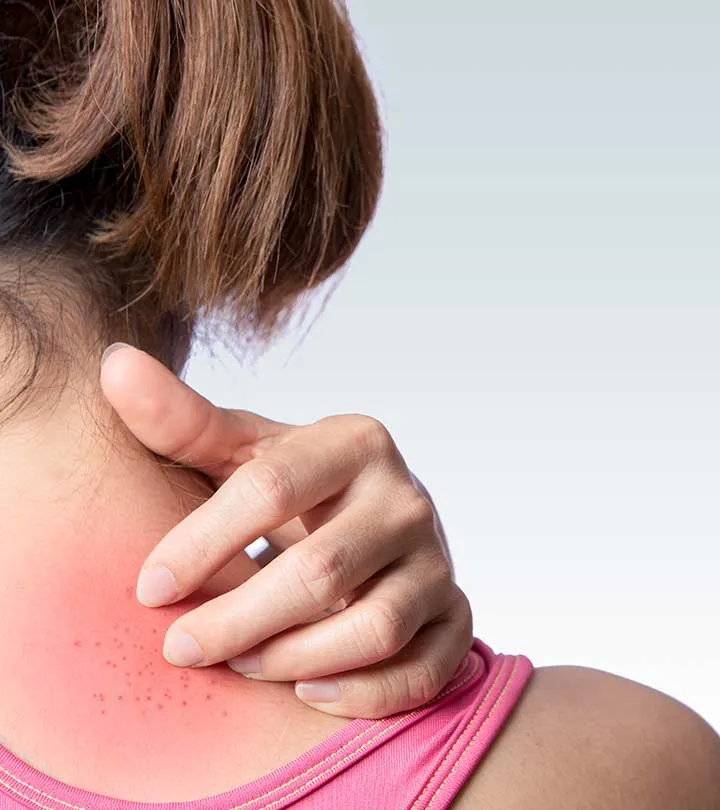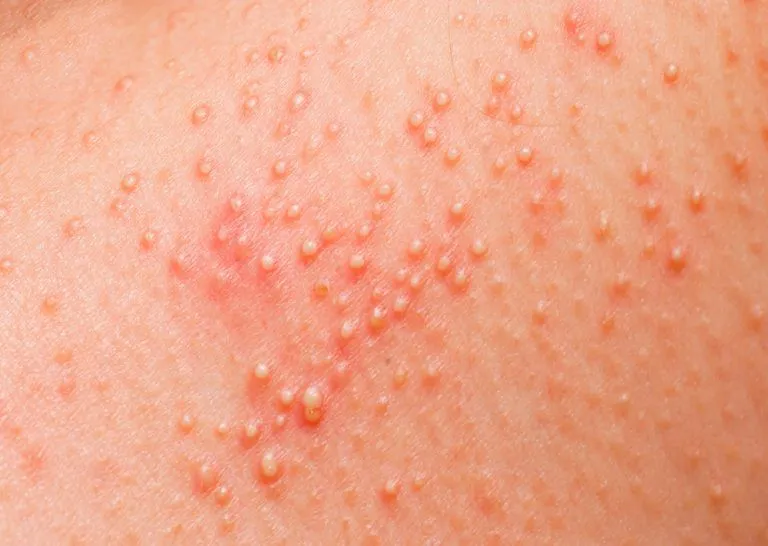What is Heat Rash/Prickly Heat?
A heat rash is a common skin rash that appears when you are hot or sweat a lot. Overheating can cause parts of your skin to feel prickly or sting. It is extremely itchy, but it is not dangerous.
Some people refer to a heat rash as "prickly heat." Miliaria crystallina or miliaria rubra are the medical terms for it.
A heat rash can occur in anyone, but it is more common in babies and young children. Active people, newborns in incubators, and people on bed rest with fever are also at a higher risk.
Heat Rash In Adults
It affects people of all races, though Asians are more affected than others. This condition is also seen in hospitalized patients who lie on their backs for extended periods of time. Heat rash can be avoided by keeping the skin cool and avoiding hot, humid conditions.
Air conditioning, loose-fitting clothing, and frequently changing out of sweaty clothes can all help prevent blocked sweat glands.
Heat Rash Signs and Symptoms
Heat rash can occur as a result of being exposed to hot conditions. Many small, red bumps may appear all over the body. Heat rash bumps are most common in covered areas where there is a lot of friction, such as the neck, chest, and body folds. Heat rash does not usually affect the face, palms, or soles. The rash can cause severe itching and stinging, which is exacerbated by heat. Because of the lack of sweating in the affected areas, the individual may become fatigued and heat intolerant.
How Is a Heat Rash Diagnosed?
Your healthcare provider will diagnose your heat rash after examining the rash on your skin and asking you questions about your symptoms, particularly how long you've had symptoms and whether any events, such as strenuous physical activity or living in a humid environment, may have triggered the rash.
As Medline Plus Mentioned, there are no tests available to diagnose a heat rash.
Types of Heat Rash
The depth to which sweat is trapped in the skin determines the type of heat rash. The signs and symptoms of each type differ.
- Miliaria crystallina is the mildest type of heat rash. It happens when the opening of the sweat duct on the skin's surface (sweat pore) is blocked. This form is distinguished by tiny, clear, fluid-filled bumps that easily break.
- Miliaria rubra is a type that occurs deeper in the skin. Prickly heat is another name for it. Small, inflamed blister-like bumps and itching or prickling in the affected area are signs and symptoms.
- Miliaria rubra's inflamed bumps occasionally fill with pus. This is known as miliaria pustulosa.
- Miliaria profunda is a less common type of heat rash. It affects the skin's deepest layer (dermis). It causes firm, painful, or itchy inflamed bumps that resemble goose bumps and can rupture.
Heat Rash Pictures In Adults
 Heat Rash Pictures
Heat Rash Pictures
 Prickly Heat Pictures
Prickly Heat Pictures
 Heat Rash Pictures
Heat Rash Pictures
 Prickly Heat Pictures
Prickly Heat Pictures
What Causes a Heat Rash?
A heat rash is caused by a clog in the narrow pathways (ducts) that carry sweat to the surface of your skin (pores). Your body responds to the clog by causing inflammation, which results in a rash.
Sweat glands become clogged due to a variety of factors, including:
- Dead skin cell fragments (skin secretions) clog your gland.
- Excessive sweat accumulates between your skin and your clothing.
- Hair follicles can clog your glands.
- Hormonal changes, such as menstruation.
- Inadequate airflow between your skin and your clothing.
Heat rashes are not caused by being "dirty" or not thoroughly cleansing your skin.
How to Get Rid of Heat Rash Quickly? How to Get Rid of Prickly Heat Overnight?
- Apply a cool, damp cloth or an ice pack to the affected area and allow it to dry. Wet a small cloth with cold water and place it on the inflamed area for 20 minutes to reduce your body temperature and provide temporary relief. Then, dry the inflamed area and leave it to sit in cool air.
- Instead of scratching, tap or pat the rash.
- Avoid using perfumed shower gels or creams.
With these actions you can calm itching or prickly feeling.
What Cream is Good for Heat Rash?
Topical hydrocortisone
Topical creams that contain hydrocortisone help treat inflammation, which is why they’re good for heat rash. Hydrocortisone Cream for Heat Rash can be applied several times a day to the affected area, and most are available over-the-counter as hydrocortisone 1%. It is not recommended to use prescription strength steroids without seeing your healthcare provider first.
Over-the-counter therapies
Over-the-counter lotions like Calamine Lotion for Heat Rash, oatmeal baths, or unscented oil free moisturizers can help soothe redness and itchiness that come with heat rash. These products are available at most drug stores.
Heat Rash Creams for Adults
- OTC Cool n Heat Cream + Lidocaine
- OTC Medcosa Adult Rash Cream: Fast Relief from Sweat Rash, Heat Rash & Adult Diaper Rash (Incontinence Cream) - Thick Moisturizing Barrier Cream. Zinc Oxide to Reduce Redness & Irritation.
How do I Treat a Heat Rash? Selfcare Guide Also Including Heat Rash Treatment Adults
Depending on the severity of your heat rash, you can treat your rash at home by:
- Keeping your skin cool and dry: If the weather is hot or humid, use a fan or air conditioner to keep your body cool. To avoid further irritation, take a cool shower and either lightly pat your skin dry with a towel or allow your body to air dry.
- Wearing cotton clothing: Choose cotton clothing that allows airflow between the material and your skin. Avoid synthetic materials, which frequently trap heat.
- Eliminating friction: To avoid irritation, wear loose-fitting clothing around a heat rash. You could temporarily avoid wearing undergarments if you have heat rashes around your groin area to reduce the amount of clothing rubbing against your rash. Babies should also avoid wearing diapers for a few hours to avoid heat rashes in the diaper region.
- Using anti-itch medications: If you have severe itching or pain from your heat rash, your healthcare provider might recommend using a corticosteroid cream or calamine lotion to soothe the area.
- Taking medicine to treat any fevers: If your heat rash is induced by fever, try taking an over-the-counter medication, such as Tylenol® or ibuprofen, to bring down your temperature.
Heat Rash Child Treatment
Heat rash does not usually require treatment. It usually clears up on its own in 2 to 3 days. You can help your child's symptoms by doing the following at home:
- Apply over-the-counter (OTC) hydrocortisone cream to the rash 1 to 2 times per day to relieve itching. Apply the steroid cream outside of the diaper. Wash your hands with warm water and soap before and after applying the cream.
- To relieve itching, give your child an over-the-counter antihistamine.
- Apply a cool compress to the rash (such as a clean washcloth dipped in cool water).
- Bathe your child in cool water.
- If your child's diaper rubs against the rash, loosen it.
Home Remedies for Heat Rash
There are numerous home remedies available for heat rash. Some will soothe or cool your skin, while others will reduce inflammation and itching while preventing infection.
It is critical not to scratch your rash. Scratching can cause more irritation and, in some cases, infection.
Cool baths and showers
Heat rash usually goes away once the skin cools down. Bathing in cool water can be beneficial in this regard. Gently washing the skin can also help to unclog the pores. This is important because clogged pores contribute to heat rash.
After bathing, make sure to thoroughly dry your skin. When skin is left wet, it can become irritated.
Fans and air conditioners
Avoid excessive sweating and humid air while your skin heals. Ventilation is essential for keeping your rash dry and cool. Stay in an air-conditioned room or use an air fan whenever possible.
Light, moisture-wicking clothes
As your skin heals, it's critical to avoid wearing clothing that irritates it or makes you sweat more. Moisture-wicking clothing that is light and loose-fitting can aid in the healing of your skin without irritating it.
Look for polyesters and other synthetic fabrics designed for exercise and sports. These will be especially effective at wicking moisture.
While cotton is not a moisture-wicking fabric, it is very breathable. It may also be comfortable to wear.
Ice packs or cold cloths
Cold compresses are excellent for relieving itchy skin. Face cloths soaked in cold water or ice wrapped in a cloth can help relieve the pain and irritation of heat rash.
Oatmeal
Oatmeal can help relieve itching and inflammation. This makes it an effective home remedy for heat rash and a variety of other skin conditions.
Soak for 20 minutes in a lukewarm bath with 1 or 2 cups of oatmeal. To avoid further irritating your skin, make sure the water is not too hot.
You can also make an oatmeal and water paste and apply it to your skin. Mix 1 part oatmeal to 1 part water until a paste forms.
Sandalwood
According to research, sandalwood is anti-inflammatory and analgesic, which means it can help with pain. Sandalwood powder mixed with a little water and applied to the rash can help relieve the burning and pain associated with heat rash.
To make a paste, combine 2 parts sandalwood powder and 1 part water. Test it on a small patch of unbroken skin before applying it to your rash. If you don't react within an hour, you should be fine applying it to the rash.
Baking soda
Baking soda (sodium bicarbonate) can be used to relieve itchy skin. It's also something that almost everyone has in their pantry. As a result, it is an excellent home remedy for heat rash and other itchy skin conditions.
Soak for 20 minutes in a lukewarm bath with 3 to 5 tablespoons baking soda.
Aloe vera
Aloe vera is an anti-inflammatory and antiseptic that can cool down the skin while preventing infections. This can help soothe swelling and pain. Use aloe vera gel directly on your heat rash to relieve the discomfort.
Unscented talcum powder
Talcum powder absorbs perspiration and thus reduces sweating. As a result, the pores are not clogged.
Scents may irritate your skin, so use unscented talcum powder. Apply a small amount to sweaty areas such as your underarms, backs of your knees, and inner thighs. Coat the skin with it and let it sit like an antiperspirant deodorant.
Neem
Neem (margosa) can be used to treat a variety of skin rashes. According to some studies, it has antimicrobial and anti-inflammatory properties. Human studies, on the other hand, are scarce.
You can make a paste out of neem powder and water. This paste can be applied to the rash, allowed to sit for a few minutes, and then washed away. Neem powder can also be added to a lukewarm bath.
Epsom salt
Epsom salt (magnesium sulfate) is said to have a variety of health benefits. Anecdotal evidence suggests that a lukewarm bath with a cup or two of Epsom salt may relieve itching.
Make sure your child does not swallow any water while taking an Epsom salt bath. Epsom salt is a laxative when taken orally. It can cause diarrhea if consumed in large quantities.
How Can I Prevent Heat Rashes?
Heat rashes can be avoided by wearing lightweight clothing and clothing that does not rub against your skin.
- Wearing cotton clothing and avoiding synthetic fabrics.
- If it's hot, stay in places with airflow (fans) or an air conditioner.
- Maintaining a cool and dry body.
- Drinking plenty of water and staying hydrated.
- Avoiding strenuous activity in extremely hot or humid weather.
When to See a Doctor
Heat rash usually heals by cooling the skin and avoiding the source of the heat. Consult your doctor if your or your child's symptoms last more than a few days or the rash appears to be worsening.
Mediterranean-Beauty Spa team (One of The Best Spas Columbus OH) is here to offer you advice, resources, and any treatment options you may require (in terms of our profession and natural quality services, because some skin conditions need clinical experts’ attention and they are not our duty).
***Our Specialty is Facial Spa Treatments***
For FREE consultation and skin analysis system, choosing the best treatment for you and talking about “Heat Rash in Adults - Skin Irritation” Call Us Right Away!
(614) 940-0886